Photography Blog, my photographs. Mostly from Northern America. And not to forget the food and the drinks I've had. All pictures are mine and taken by myself. And none of them are photoshopped.
Don't wanna be here? Send us removal request.
Text
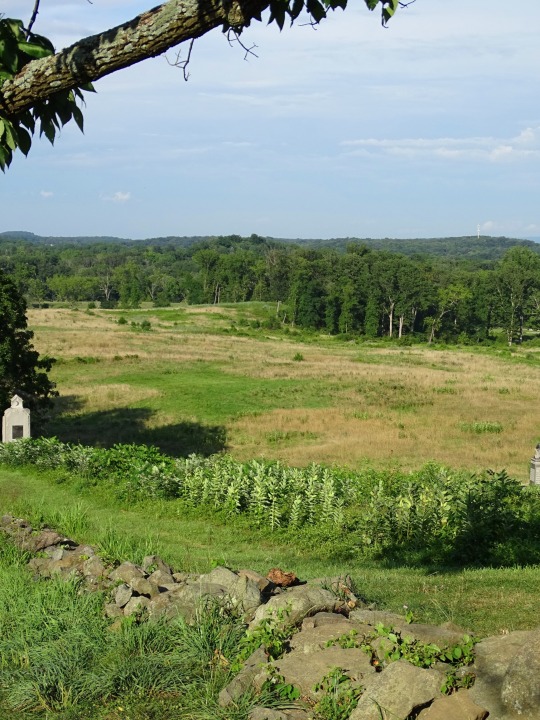



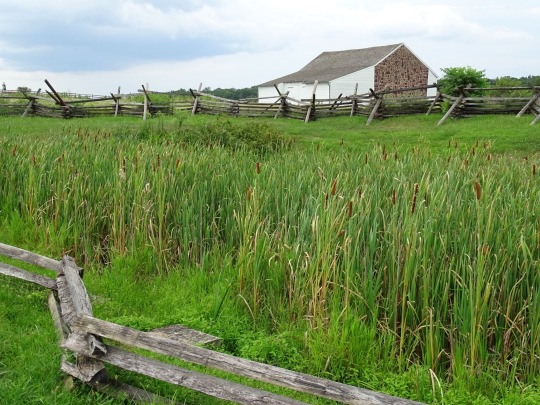





American Civil War: The final day of the Battle of Gettysburg culminated with Pickett's Charge on July 3, 1863.
#McPherson's barn#Devil's Den#Chambersburg Pike#Little Round Top#USA#Gettysburg National Military Park#Pennsylvania#travel#summer 2019#American Civil War#original photography#US Civil War#Battle of Gettysburg#final day#Pickett's Charge#3 July 1863#anniversary#US history#vacation#landscape#countryside#flora#nature#woods#cannon#landmark#free admission#tourist attraction
1 note
·
View note
Text











Quebec City was founded by Samuel de Champlain, a French explorer and diplomat, on 3 July 1608.
#Batterie Royale#Place Royale#Quebec City#founded#Samuel de Champlain#white colonialism#3 July 1608#anniversary#Canadian history#travel#summer 2018#2015#tourist attraction#landmark#architecture#cityscape#original photography#vacation#flowers#basse ville#lower town#haute ville#Château Frontenac
2 notes
·
View notes
Text



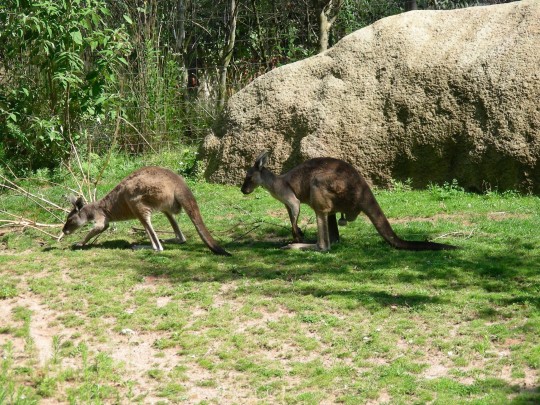









Zoo Basel (Zolli) openend to public on July 3, 1874.
#African bush elephant#Zoo Basel#Zolli#opened#3 July 1874#anniversary#Swiss history#Switzerland#Schweiz#spring 2008#original photography#day trip#tourist attraction#landmark#outdoors#indoors#crocodile#Indian rhinoceros#Snow leopard#giraffe#Western grey kangaroo#stork#Asian small-clawed otter#Sun bear#African wild dog#cityscape#architecture
1 note
·
View note
Text












United States President Franklin D. Roosevelt dedicated the Eternal Light Peace Memorial and lights the eternal flame at Gettysburg Battlefield on July 3, 1938.
#Eternal Light Peace Memorial#Paul Philippe Cret#Lee Lawrie#dedicated#USA#3 July 1938#anniversary#US history#Pennsylvania#travel#Gettysburg National Military Park#Adams County#original photography#vacation#summer 2019#tourist attraction#landmark#landscape#countryside#American Civil War#US Civil War#relief#fire#sky
1 note
·
View note
Text










Éclatement II by Charles Daudelin was unveiled on July 3, 1998.
#Éclatement II by Charles Daudelin#unveiled#3 July 1998#Place Jean-Pelletier#Gare du Palais by Harry Edward Prindle#fountain#anniversary#travel#Canadian history#moon#evening light#original photography#public art#tourist attraction#landmark#cityscape#architecture#Québec#basse ville#Quebec City#Canada#water#vacation
2 notes
·
View notes
Text























National Eat Beans Day
National Eat Beans Day (or National Eat Your Beans Day) occurs on July 3 each year, and we guarantee it will be a holiday that will give you a whole new appreciation for legumes as a food group. And if not, perhaps our fun facts and riddles will have you full of beans. Try this one on for size — ‘I am a bean, very lean. I am not fat, I’m sure of that. Like all beans, I’m small and round — but unlike others, I don’t grow in the ground’. Giving away the answer would be too easy, but we’ll give you a hint — this may be a kid’s favorite kind of bean. It may also surprise you to know that beans are not strictly classified as ‘veggies’ either since legumes by definition are any seeds or fruits that grow within pods or the edible pods themselves, which grow on leguminous plants (i.e. those belonging to the pea family). This opens up a whole world of beans to us, which should be exciting, especially for those who grew up being forced to eat beans as a vegetable.
History of National Eat Beans Day
Though the exact date and reason for National Eat Beans Day being made a holiday are not known, we do know that the history of the bean itself predates even the invention of the pots used to cook beans. Bean cultivation dates back as early as 7,000 years ago, making it a staple that has stood the test of time, and we’re not surprised. With amazing health benefits, legumes are plant-based, protein-packed powerhouses of nutrition. So this also means that they’re for everyone, no matter the diet or lifestyle choice. It’s very rare to find a person allergic to beans too, though some legumes can trigger allergic reactions, such as peanuts.
Beans are originally from wild vines which grow in Central and South America. This is known as the common bean, and since then, thousands of bean varieties exist today and are cultivated all over the world. They are one of the most versatile crops and can be grown almost anywhere. 5,000 years ago the lima bean and other varieties were a popular favorite among the Incas and Aztecs, and the popularity of beans is so much so that they are worth a mention in Homer’s “Iliad,” where he uses beans as a metaphor. Ancient Egyptians seem to have also been partial to beans and lentils, as paintings and physical evidence shows that bodies were buried with beans, to nourish them on their journey to the afterlife. By the 1500s, with the advent of trade via ships, beans began to reach all the corners of the globe and more varieties began to be cultivated. Though often viewed as a poor man’s food, beans have been an important source of nourishment for people in dire circumstances; such as the soldiers who fought in the First and Second World Wars, or the Europeans who were dying out due to the spread of the plague in Europe, during the Middle Ages. Who would have thought beans could be such lifesavers.
National Eat Beans Day timeline
700 B.C. The French Revamp Vegetable Soup
The French begin to add chickpeas to their vegetable soup, making it a heartier meal in every way.
800 A.D. Chickpea Cultivation Helps Save Lives
Emperor Charlemagne orders the cultivation of chickpeas to save people from the ravage of war, and it works.
1700s Beans Spread Across the World
With the increase in trade, beans begin to be traded all over the world.
1920s Beans Help Ward Off the Great Depression
Beans become the poor man’s meat during the Great Depression in America, enabling many families to survive.
National Eat Beans Day FAQs
What are the healthiest beans to eat?
The top nine healthiest beans/legumes to eat are — chickpeas, lentils, peas, kidney beans, black beans, soybeans, pinto beans, navy beans, and peanuts.
Is it bad to eat beans at night?
Yes, eating beans at night is not recommended. This is because beans can cause indigestion or gas problems, so it’s better to stick to eating that bowl of chili during the daytime.
Is it okay to eat beans every day?
Yes! Not only are beans low in fat, but they are also great sources of protein and fiber, and they come packed with nutrients like iron, folate, calcium, and potassium. This can help protect against high cholesterol which may lead to heart disease. The recommended portion size of beans/lentils is 25-38 grams a day.
National Eat Beans Day Activities
Eat beans
Grow your own beanstalk
Fix up a care package
Yes, you guessed it. Sometimes simplicity is everything. In this case, we’re keeping it real simple, by telling you to go eat some beans — green, black, red, or yellow — the choice is yours. Boil them, bake them, saute them, mush them, or eat them raw; beans are bound to have your body thanking you for years to come.
Though we cannot guarantee a hen laying golden eggs at the end of it, we can guarantee that there’s nothing better than the feeling of eating your own home-grown produce. And what’s more, the golden glow of health which your beans will bring you is worth far more than any golden egg-laying hen!
One of the things we love about beans is how affordable (we daresay cheap even) they are. So why not take the time to gather some different types of legumes, a hand-written little booklet of recipes, and give them to a family who may need extra beans.
5 Recipes We Bet You Never Thought Used Beans
Beanie brownies
Honey-roasted chickpeas
Navy bean pesto
Bean burger
Alfredo sauce
These ooey-gooey delicious brownies come with a surprising twist — black beans are the star ingredient!
Step aside, caramel popcorn, as this delicious, crunchy snack takes over the coffee table at your next movie night.
Pureed navy beans with any greens can make an amazing and hearty pesto sauce.
All the flavor, all the protein, but not meat. Perfect for everyone, even those hardcore meat lovers.
White beans can make the perfect, silky alfredo sauce, which will cause all to go “mama mia”!
Why We Love National Eat Beans Day
Beans are healthy
Beans have a variety
Beans are cheap
If we have not said this enough times already, we will say it again — beans are so good for you. Not only are they amazing sources of protein and fiber, but they also contain folic acid, iron, potassium, and calcium, all of which are beneficial to prevent all sorts of medical conditions.
Some say that there are as many as 4,000 varieties of beans out there. If that doesn’t inspire you to start exploring and experimenting in the kitchen, we don’t know what will. Trying out different beans can also bring you one step closer to exploring a whole new cuisine or culture, and variety is the spice of life, after all.
We’re glad that beans were overlooked by the rich snobs throughout history so that we all can enjoy the delicious benefits of beans without feeling the pinch in our pockets. For something to be cheap and nutritious almost stretches belief.
Source
#Lemongrass Chicken Bowl#BBQ Ribs#Pulled Pork#Steak Tacos#Enchilada#Jaime-Style with cheese & sauce Burrito#Carnitas Tostada#Navajo Taco#Pollo campurriano#Tempura Fried Green Beans#Nihonmachi Special#USA#Canada#Edamame#Chicken Souvlaki#Tournedos Rossini#Les Halles Brasserie by Anthony Bourdain#Brix Restaurant & Gardens#National Eat Beans Day#3 July#travel#vacation#NationalEatYourBeansDay#original photography
1 note
·
View note
Text










The United States Virgin Islands celebrates Emancipation Day as an official holiday on July 3. It commemorates the abolition of slavery by Danish Governor Peter von Scholten on July 3, 1848.
V.I. Emancipation Day
People in the United States Virgin Islands celebrate the V.I. Emancipation Day every year on July 3. It is considered a significant day because it commemorates the release of enslaved people from Danish rule in the West Indies. It celebrates the official abolition of slavery in the West Indies islands and is a public holiday in the U.S. Virgin Islands. More than 9,000 enslaved black people revolted against the Danish colonizers on July 3, 1848. As per the orders of the then Governor-General of the Danish West Indies, Peter von Scholten, all the enslaved people were set free. The revolt was spearheaded by Moses Gottlieb.
HISTORY OF V.I. EMANCIPATION DAY
The day the slaves in the Caribbean nations were freed from slavery by the colonizers is observed as a state holiday in these islands. The British Empire officially abolished slavery on August 1, 1834.
Since the mid-eighth century, the Virgin Islands, which consist of the islands of St. Thomas, St. John, and St. Croix, were under Danish rule. The islands were ideal for sugar plantations, a highly labor-intensive crop. All of this manual labor was provided by the enslaved black people brought in ships from Africa and other areas, and were called ‘slaves.’ They exceeded the Danish settlers by a large number. One of the earliest slave uprisings occurred on St. John Island in 1733 when slaves seized control of the island for six months. However, the uprising was eventually managed and cooled down with the assistance of the French powers.
In the year 1834, Britain officially abolished slavery. The French followed suit in 1848. The slave emancipation movement in France influenced the Virgin Islands as well, thereby triggering a non-violent slave uprising on St. Croix. Despite the assurance given by the Danish Crown to liberate all the slaves permanently by 1859, the slaves were freed before time by the then Danish Governor-General.
The United States Virgin Islands has declared the anniversary of this incident a public holiday, and it is also followed by America’s Independence Day on July 4. The biggest celebration in St. Croix takes place in Frederiksted, also called the ‘Freedom City,’ where the slave insurrection of 1948 took place. The day is celebrated with much enthusiasm and the festivities include children’s games, cultural entertainment, oratory, musical shows, dance performances, food, drinks, and crafts.
V.I. EMANCIPATION DAY TIMELINE
1672
Danish West India Company
The Danish West India Company brings the trans-Atlantic slave trade to the present-day U.S. Virgin Islands.
1828
Scholten Becomes The Governor-General
Scholten becomes the Governor-General of the Danish West Indies islands and works toward alleviating the burden of the enslaved people.
1848
Slavery Abolished
After being affected by the freedom movement carried on by some 9,000 slaves working in plantations, Governor Scholten orders their permanent liberation.
1878
Fire Burn Riot
Three women named, Mary, Agnes, and Matilda, stand against the oppression, colonial powers, and slavery and go on to become the face of the slave liberation movement.
V.I. EMANCIPATION DAY FAQS
When did slavery end in the Virgin Islands?
The day of the liberation of slaves traded by colonial forces is observed as a public holiday across the Caribbean. Many islands observe the day of August 1 as the day of slavery abolition as the British abolished slavery on this day in 1834.
When did the Virgin Islands get citizenship?
A 1927 act and another one in 1932, awarded most Virgin Islanders with U.S. citizenship.
What is the official language of the West Indies Caribbean islands today?
Dutch is the official language of these Caribbean islands that were under Danish rule.
HOW TO OBSERVE V.I. EMANCIPATION DAY
Participate in the celebrations: Participating in the celebrations is a great idea. Make sure you don't miss out on any Emancipation festivals in your area!
Read about the land: To learn more about the culture and traditions of the Virgin Islands, read history, explore cultural publications, and watch related videos on the internet. You can also visit the islands.
Spread the news: Use social media to spread awareness regarding the day’s importance. You can also launch a social media campaign using the hashtag, #V.I.Emancipation.
5 INTERESTING FACTS ABOUT SLAVERY
Slavery continues in the 21st century: Slavery is not over yet; sadly, around 40 million individuals were enslaved in 2019, with a quarter of them being children.
Slavery in the modern era: Child labor, forced marriages, human trafficking, and sexual slavery are some of the prevalent and modified forms of enslavement common even today.
Forced labor: According to the reports, forced labor generates an annual profit of more than $150 billion in the U.S. alone.
Children are the worst hit: As per the U.N.I.C.E.F., more than 160 million children work as laborers in the U.S.
Most child laborers: Reports indicate that Sub-Saharan Africa employs the most child laborers i.e. around 26 % of the country’s children work as laborers.
WHY V.I. EMANCIPATION DAY IS IMPORTANT
Learn the history: Reading and exploring the history of these islands is important. Knowing more about the freedom movements helps us to understand the malpractice of slavery.
It marks the end of enslavement: For almost two centuries, the Danish rulers were engaged in the slave trade. The V.I. Emancipation Day commemorates the struggle involved in the abolition of this degrading practice.
It salutes equality and liberty: Irrespective of color and creed, everyone is equal and holds the freedom to live as per his/her own terms. This day reminds us that a balanced and good society has no place for slavery. This is a day to salute the virtues of equality and liberty, that are essential to life.
Source
#V.I. Emancipation Day#V.I.EmancipationDay#United States Virgin Islands#US Virgin Islands#USVI#Emancipation Day#USA#3 July 1848#anniversary#US history#Fort Christian#travel#St. Thomas#Charlotte Amalie#Magens Bay#Caribbean Sea#Caribbean Island#summer 2013#seascape#landscape#cityscape#architecture#flora#nature#tourist attraction#landmark#original photography#forest#vacation
2 notes
·
View notes
Text












Air Conditioning Appreciation Day
I grew up, really, in the days before air conditioning. So I can remember what it was like to be hot, for instance, and I can remember what it was like when your barber shop and your local stores weren’t air-conditioned, so it was hot when you went in them and they propped the doors open. - Bill Bryson
In the hot summer months, you don’t want your Air Conditioning breaking down. Change your air filters and schedule some AC maintenance, and remind others.
$Most inventions start with a question and a drive to solve a problem that is consistent in everyday life. Air conditioning was one of those problems that have been around for over thousands of years. Since the invention of the AC, air conditioning hasn’t been much of an issue anymore, but many people wouldn’t have the comfortable homes they have today if it wasn’t for the invention of the AC. Let’s learn about Air Conditioning Appreciation Day!
History of Air Conditioning Appreciation Day
Before the days of air conditioning, many ancient civilizations had highly advanced ways of cooling down during the hot summer days. The Persians, for instance, had underground tunnels used to transport water for crops, allowing hot air to cool down the water and as cold air would escape the upper shafts, it would cool down the basements and lead up to the inhabited rooms. The Romans also had this same design, which helped cool off the stone walls and buildings so people could be comfortable. Ice has always been around, and the Roman emperors would use ice to cool themselves off. Fans have been around since the Han Dynasty in Ancient China, and centuries later, the United States in its early formation would use these techniques along with damp sheets to cool themselves off. Once Telsa made osculating fans, this led the way to the invention of the AC.
Then, 1902 came around in the United States. During a time of industrialization, Willis Haviland Carrier was trying to find a way to control humidity in the printing plant he was in at the time. He discovered that when air passed through water-filled coils, the air cooled off as it moved through, helping maintain consistent ink alignments and paper dimensions. While he originally invented it for his printing plant, his invention became highly demanded, and thus he created the Carrier Air Conditioning Company of America. Today, ACs are practically vital to every residential home and automobiles, and this significantly increased during the 1950s. Hence, Air Conditioning Appreciation Day celebrates the birth of this remarkable invention as well as its long history.
How to celebrate Air Conditioning Appreciation Day
Want to celebrate this cool holiday? Schedule a regular maintenance check for your AC so it can work the best it can. Clean your air filters and give it a break every once in a while. Also, share this holiday on social media using the hashtag #airconditioningappreciationday and let everyone know what day it is today.
Air Conditioning Appreciation Day FAQs
How did air conditioning influence the spread of jazz music?
Early jazz clubs in the 1930s embraced air conditioning to keep patrons comfortable during crowded performances.
This innovation made clubs more appealing, attracting larger audiences and allowing jazz to flourish as a cultural movement.
Cities like New Orleans and Chicago saw air-conditioned venues contribute to their vibrant music scenes.
What role did air conditioning play in early space exploration?
Air conditioning was vital for maintaining cool, controlled environments in spacecraft assembly areas.
Engineers needed precise temperature and humidity settings to ensure materials remained stable during production. This technology supported the successful launches of missions like Apollo 11.
Why are some tropical countries hesitant about air conditioning?
In certain tropical regions, air conditioning faces cultural resistance due to environmental concerns and energy costs.
Many communities prefer eco-friendly cooling methods, like passive ventilation or shaded architecture, to preserve natural resources and reduce carbon footprints.
Did air conditioning influence modern holiday trends?
Yes, summer vacations gained popularity as families could travel comfortably in air-conditioned cars and stay in cooled accommodations.
Destinations like Orlando and Las Vegas owe much of their peak summer tourism to the availability of air conditioning.
What impact did air conditioning have on schools and education?
The installation of air conditioning in schools improved student performance by creating a better learning environment.
Before this, extreme heat often disrupted classes in warmer regions. Today, schools in arid climates heavily rely on air conditioning for uninterrupted education.
How did air conditioning affect global trade?
Refrigerated air-conditioning technology revolutionized the shipping industry by enabling the transportation of perishable goods.
Items like fresh produce and seafood could now be shipped globally, creating new markets and expanding international trade.
Are there unique cultural celebrations for Air Conditioning Appreciation Day?
In some places, people mark the day with quirky events, such as “retro cool” parties using vintage air conditioners.
Others organize energy-saving workshops to teach ways to make air conditioning more efficient and environmentally friendly.
What are the strangest misconceptions about air conditioning?
Some believe air conditioning can spread illnesses, like colds. In reality, it’s not the air conditioner but improper maintenance, like dirty filters, that might circulate germs.
This misunderstanding often sparks debates about its safety.
Did air conditioning affect food storage innovations?
Air conditioning improved food preservation by enhancing cold storage capabilities.
This innovation led to the development of large-scale supermarkets, offering fresh produce and frozen goods year-round, transforming shopping habits.
How has air conditioning been used in sports?
Air-conditioned stadiums, such as those in Qatar for the FIFA World Cup, provide comfort for players and fans in extreme heat.
The technology also extends training seasons in hot climates, allowing athletes to maintain performance levels.
Source
#Fort Vermilion#Calgary#Bellagio - Las Vegas Luxury Resort & Casino#AirBnB#Sweden#indoors#hotel room#Air Conditioning Appreciation Day#3 July#bedroom#kitchen#living room#interior#travel#USA#Canada#original photography#vacation#architecture#engineering#technology#AirConditioningAppreciationDay#tourist attraction
1 note
·
View note
Text














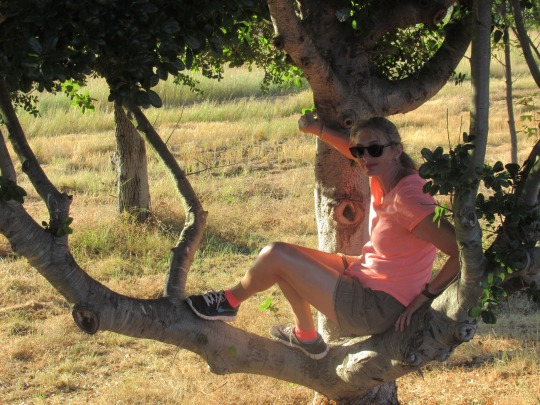

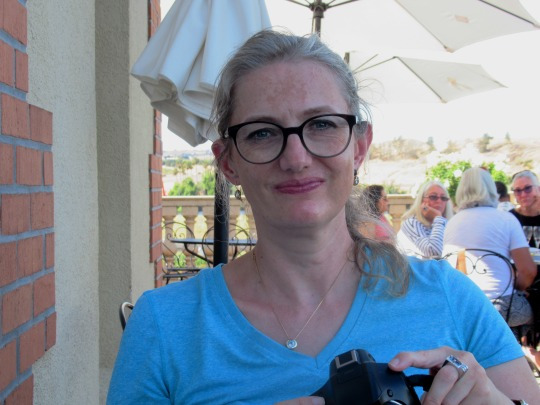








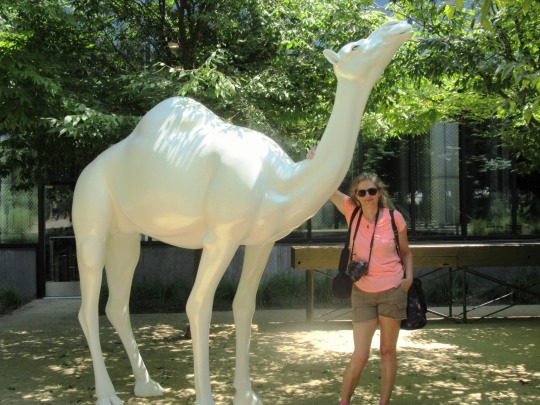

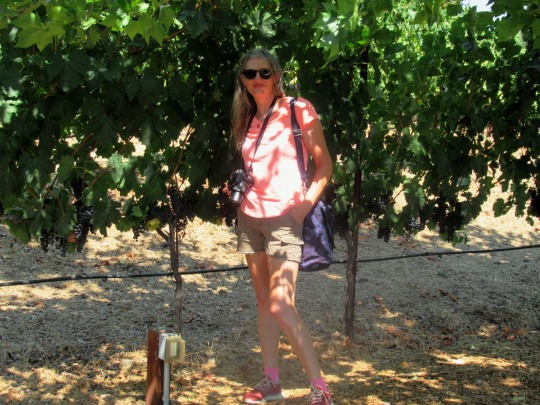
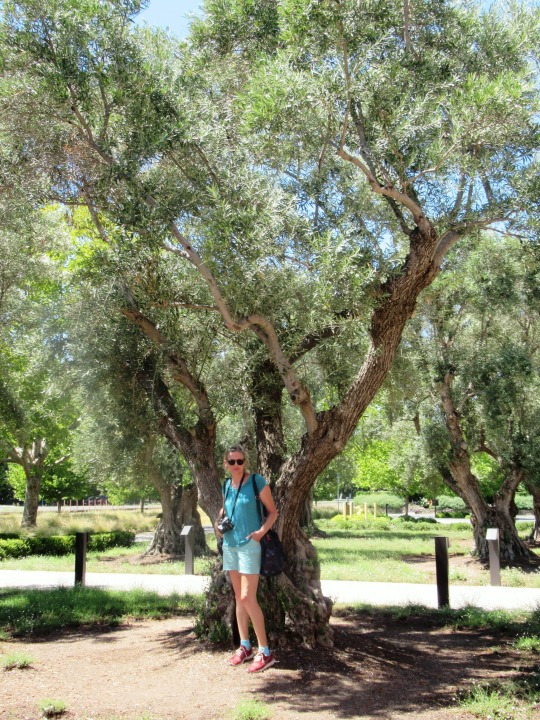

National Stay Out of the Sun Day
From carcinomas to sun burns to wrinkles, avoid the negative effects of the sun by staying indoors or in the shade, or investing in a sun shading hat or parasol.
Everybody loves a sunny day, but in the height of summer it’s easy to get dehydrated, sunburnt and worse. Stay Out Of The Sun Day is about looking after yourself by taking a day away from the sun and finding some nice, relaxing shade – and if you are out and about, make sure you’ve got sun cream, plenty of water and some shade!
Learn about Stay Out Of The Sun Day
Do you consider yourself a bit of a sun worshipper? Well, it’s time to have a day off! Stay Out Of The Sun Day is the perfect chance for you to stay indoors and shield yourself from the UV rays.
This day is about giving our skin a break from the sweltering heat. If you simply cannot resist going outside, then you can always find a nice bit of shade, yet make sure you wear sunscreen and make an extra effort to protect your skin. That is what this day is really about.
Moderate exposure to the sun can provide you with a natural and healthy dose of Vitamin D. However, if you end up spending too much time in the sun, this can result in skin damage. This can speed up the ageing process, which we’re sure no one wants!
Plus, there are also links between too much sun exposure and skin cancer, which is why it is so important to make sure you educate yourself and protect yourself when sunbathing. Use Stay Out Of The Sun Day to educate others as well. After all, if you reach just one person, you could actually end up making a difference.
History of Stay Out Of The Sun Day
When you consider the fact that there have been scientific studies into the link between skin cancer and the sun, it is of no surprise that someone decided to create a Stay Out Of The Sun Day in order to encourage people to protect their skin. Skin cancer is the second most common type of cancer for those between the ages of 15-years-old and 29-years-old. Staying out of the sun is the best way to protect your skin.
Nevertheless, we can also use Stay Out Of The Sun Day as a day of education. You can find out more about the damage the sun can cause, as well as the different steps that you can take to ensure you still experience the benefits of the sun but that you protect yourself at the same time. Make sure you share your findings with other people to encourage them to be safer while they are in the sun too.
How to observe Stay Out Of The Sun Day
There are so many different things that you can do to celebrate Stay Out Of The Sun Day. You could decide to spend your day participating in other activities that are good for your health. For example, rather than spending all day in the sunshine, why not hit the gym instead?
This is a great act of self-care, and it will ensure you’re out of the sun, even if it is for one day only. Of course, you could take a dance class or partake in any other sort of exercise.
What about if the sun is shining in your area and you don’t get many sunny days? We understand if you would want to make the most of a situation like this. However, you can still enjoy the sun and the great outdoors while ensuring you are not directly beneath it.
Instead, why not find your nearest willow and try to take cover underneath it? You can enjoy a moment to relax, taking in all of the beautiful nature around you. You can even get stuck into a good book!
If you are going to be taking a trip to the beach on Stay Out Of The Sun Day, please make sure that you are extra careful. There are many different ways that you can do this. Staying hydrated is, of course, the number one rule! Aside from this, you need to make sure that you lather yourself in sunscreen, and we mean a high factor sunscreen!
You can also throw on your favorite floppy hat and hoist an umbrella into the sand to make sure that you have plenty of protection while still enjoying a fun day at the beach.
If you are not desperate to go outside, then you can use Stay Out Of The Sun Day as the perfect excuse for you to kick back and enjoy the great indoors! A lot of people love nothing more than chilling on the sofa and watching their favorite TV series or enjoying a movie marathon.
With Stay Out Of The Sun Day, you have the perfect excuse to do this and you do not need to feel guilty about having a bit of a lazy day. After all, we all deserve time to relax and wind down from time-to-time.
If you are going to be staying indoors, why not use this time to watch a television show based on the sun or a movie? There are a lot of different classic films with ‘sun’ in the title. This includes A Place in the Sun, Little Miss Sunshine, Eternal Sunshine of the Spotless Mind, Empire of the Sun, and Tears of the Sun. Some of the different shows that you could watch include Shahs of Sunset, Sunset Beach, Sunshine, 3rd Rock from the Sun, and It’s Always Sunny in Philadelphia, although we do not recommend watching the latter with young viewers. Or, why not listen to a bit of music? KC and the Sunshine Band is the obvious choice that comes to mind here!
If you do have children, you can spend the day doing some sun crafts. All you need to do is a bit of digging online and you will see that there are so many different fun and exciting craft projects that you can work on with your children in honor of this day.
This includes sunshine watches, suncatchers, and much more! Make sure you use this as an opportunity to educate your children about the sun as well. You can teach them about the science behind the sun, as well as informing them of why it is important to protect yourself from the sun’s rays and the different ways that this can be achieved.
Source
#Yukon#Alberta#British Columbia#Canada#summer 2023#Jasper National Park#rental car#Colorado#Louis M. Martini Winery#Hall Winery#Bellagio - Las Vegas Luxury Resort & Casino#Paradise#California#USA#Nevada#Utah#National Stay Out of the Sun Day#NationalStayOutoftheSunDay#3 July#original photography#landscape#cityscape#travel#vacation#tourist attraction#landmark#shade#shadow#nature#flora
1 note
·
View note
Text















National Swimming Pool Day
National Swimming Pool Day falls on July 11 each year and is not just a celebration of swimming pools but also of all the paraphernalia that accompanies pools, such as pool toys, accessories, and swimwear. Think back to your favorite pool memories, and make today worthy of adding to your memory bank. What makes the perfect pool day? Is it the chance to show off that summer bod, looking fabulous in the latest swimwear designs, or maybe the fact that you love the exercise that swimming provides? Or perhaps you love poolside barbeques and the very thought of it gets your mouth watering. Whatever the reason, we are sure glad that someone long ago thought of the concept of a swimming pool, which makes summer a lot more enjoyable (and the heat more bearable) altogether.
History of National Swimming Pool Day
While there is no clear intimation of when National Swimming Pool Day was first founded or observed, we can track the origin of the swimming pool itself. Some sources trace the first swimming pool-like structure all the way back to 3000 B.C. in Mohenjo-Daro (in modern-day Pakistan), where a 40 by 23-foot pool was discovered, lined with bricks and covered with a tar-like sealant. Years later, the Romans built artificial pools in which to conduct military exercises, nautical games, and athletic training. The Roman emperors would often have private pools with fish in them, hence one of the Latin words for ‘pool’ is ‘piscina,’ meaning ‘fish pond.’ A rich Roman lord and patron of the arts, Gaius Maecenas, is said to have built the first heated swimming pool in 100 B.C.
By the mid-1800s, swimming pools gained popularity in Britain, with the earliest indoor pools with diving boards being built in 1837. The Maidstone Swimming Club, founded in 1844 in Maidstone, Kent, is one of the oldest surviving swimming clubs in Britain. The idea behind its formation was to teach people to swim and therefore survive drowning — following a spate of drownings that happened in the rivers in the area. The oldest known swimming pool in the U.S. is called Underwood Pool, located in Belmont, Massachusetts. It was only after World War II that home swimming pools became popular in America, and Hollywood movie stars’ luxury homes with pools made this an all the more desirable symbol of status. Nowadays, the U.S. has more than 10.4 million home pools, though New Zealand holds the record for most swimming pools per capita. And here we thought they only had a lot of sheep!
National Swimming Pool Day timeline
3000 B.C .First Swimming Pool is Invented
Mohenjo-Daro is the site where the oldest swimming pool is discovered.
100 B.C. First Heated Pool is Built
Gaius Maecenas, a Roman lord, builds the first heated pool.
1844 Maidstone Swimming Club is Formed
The Maidstone Swimming Club in Kent, England, is formed, the first of its kind.
1906 Swimming Pools on the Ocean
The swimming pool goes out to sea on White Star Line’s ocean liner, Adriatic.
National Swimming Pool Day FAQs
When should I open my pool?
You should open your pool when the temperature is consistently above 70 degrees during the day. This helps prevent algae from growing, keeps pollen from collecting in the water, and doesn’t cost much more than opening later in the spring.
Can I be a competitive swimmer?
Joining a swim club or community swim team offers regular practice, supervised instruction, and opportunities to compete against other athletes. Olympic-level swimmers generally train five hours a day for three days a week and then two to three hours daily for the remaining four days each week.
What temperature can you swim in a pool?
According to the World Health Organization, water temperatures ranging from 78 to 86 degrees Fahrenheit are generally comfortable and safe for those engaging in moderate physical activity in a pool.
How to Celebrate National Swimming Pool Day
Take a dip
Opt for a luxury pool experience
Visit a water park
This one was obvious. What better way can there possibly be to celebrate National Swimming Pool Day than diving right into the cool waters of your nearest pool?
If an ordinary pool day doesn’t quite cut it for you, there are many luxurious options for you to celebrate this holiday in style. How about a staycation at an exotic spa, paying a visit to hot springs, or looking up the most fabulous five-star hotel pools to pay a pretty penny to take a dip in (this will be great for your Instagram, too).
A fun day out for the whole gang, visit a water park near you or plan a road trip to some of the more famous ones. There’s no doubt this will be an enjoyable excursion for everyone, young and old! Whether you seek thrills by zipping down water slides or prefer just lazing in a tube and gently drift around, there’s bound to be something for everyone.
5 Kinds Of Pools You’ll Want To Take A Dip In
Infinity pools
Jacuzzis/hot tubs
Rockpools
Grotto pools
Hot springs
Giving the illusion that there’s no water’s edge, these pools are usually located near stunning views.
Small in size, these can be very relaxing and are often used for hydrotherapy too.
Also known as tide pools, there are natural pools by the sea that exist as pools during low tide.
Often hidden and only accessible from the water, they also usually have a waterfall feature.
Produced by geothermally heated groundwater, these pools contain minerals and can be amazing for a soak.
Why We Love National Swimming Pool Day
Swimming is universal
Many different types of pools
Pool days are fun
It is a truth universally acknowledged that swimming is a favorite summertime activity all over the world, therefore, knowing that people all over are swimming, too, makes it all the more an enjoyable pastime.
The myriad forms that pools can take are exciting to learn about, and (hopefully) experience. There may be some pools you want to visit that are even on your bucket list.
Source
#Spain#reflection#Graceland#Allure of the Seas#Sixty Hotel Miami Beach#Loews Miami Beach#Key West#Bellagio Resort & Casino#Bellagio Las Vegas#Daytona Beach#seascape#Atlantic Ocean#travel#original photography#vacation#tourist attraction#landmark#cityscape#architecture#National Swimming Pool Day#USA#NationalSwimmingPoolDay#Memphis#Paradise#11 July
2 notes
·
View notes
Text

At the Beach
What do you think about my pic?
#Pumphouse Beach#Hay River#Great Slave Lake#sand#driftwood#forest#Northwest Territories#Canada#summer 2024#travel#original photography#vacation#tourist attraction#landmark#landscape#countryside#nature#flora#photo of the day#What do you think about my pic?
4 notes
·
View notes
Text



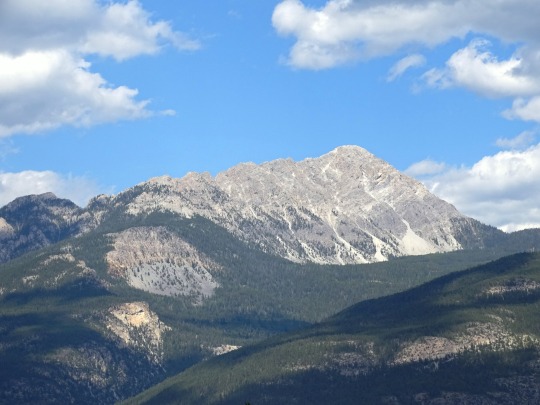



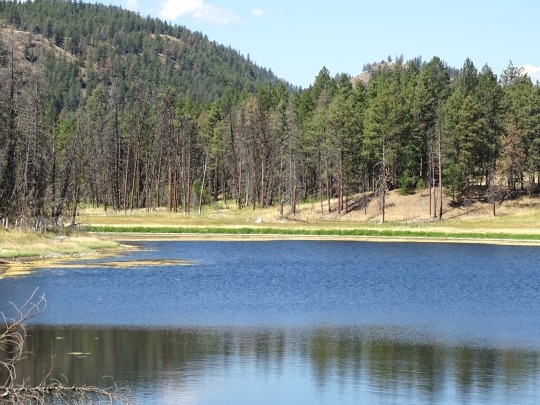


Forest (No. 326)
Columbia Lake, BC (six pics)
Rampart Pond, BC (four pics)
#Columbia Lake#Kootenay Valley#travel#original photography#vacation#tourist attraction#landmark#landscape#countryside#Rocky Mountains#Canada#summer 2024#Canadian Rockies#flora#nature#forest#sub-alpine fir#British Columbia#Rampart Pond
10 notes
·
View notes
Text

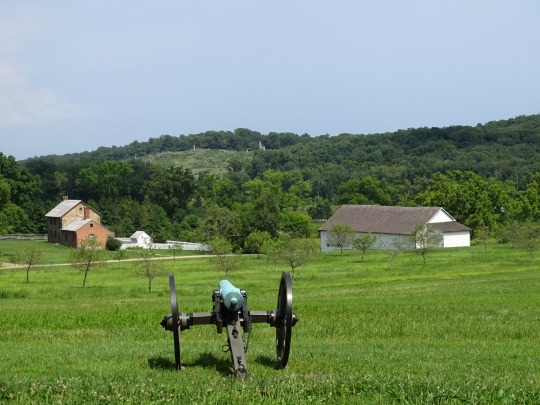








The Second Day of the Battle of Gettysburg was on July 2, 1863.
#Second Day of the Battle of Gettysburg#2 July 1863#anniversary#US history#travel#original photography#vacation#tourist attraction#landmark#landscape#countryside#summer 2019#Gettysburg Battlefield Historic District#Gettysburg National Military Park#US Civil War#American Civil War#Devil's Den#Little Round Top#free admission#cannon#flora#nature#Pennsylvania#USA
1 note
·
View note
Text

National Anisette Day
National Anisette Day is celebrated on . But what exactly is anisette? Anisette is a liqueur derived from the humble aniseed spice. Aniseed, from the anis herb, is also what gives that licorice and fennel flavor. In its natural form, anisette tastes dry and bitter. That’s why some distillers sometimes add sugar syrup to make the liquor sweet and palatable. Countries like Spain, Italy, Portugal, and France are the leading countries in drinking anisette. While it is rarely consumed on its own, anisette is a common ingredient in many cocktails.
History of National Anisette Day
The herb of the aniseed is often the main ingredient in anisette and is considered to have medicinal properties. It is also sweeter than other anise-flavored liqueurs, and anisette’s association as a medicinal cure dates back to ancient Egypt. The anisette in Europe is dryer than the anisette available in America. Distillers sometimes add spices like coriander and fruit to distill anisette.
Aniseed is the seed of the anise plant. Like absinthe, anisette is created by distilling aniseed. Legend has it that it was first made as a replacement for absinthe since it has fewer herbs and no wormwood. In fact, some anisette tastes so dry and bitter that some brands add up to 350 grams of sugar for every liter of it! It is mixed with other flavored liquors and is typically not drunk straight. Anisette is sweeter than most other anise-flavored liqueurs and has an alcohol content of about 25%. It can also be used in recipes. Café de Paris is a popular cocktail made with anisette, gin, cream, and egg white. When it is stirred with bourbon and bitters, the drink is known as a New Orleans. Another very popular drink made with anisette and other alcohol is known as a Palomita. However, traditional drinkers simply mix anisette with cold water to enjoy its unique taste. Anisette is known by different names around the world, some of which are ‘raki’ in Turkey, ‘mastika’ in Bulgaria, ‘ouzo’ in Greece, ‘aguardiente’ in Colombia, ‘sambuca’ in Italy, and ‘pastis’ in France.
National Anisette Day timeline
13th Century Licorice
Licorice is first used in a confectionary item.
1673 First Bar in America
The oldest bar in the U.S., White Horse Tavern, opens in Newport, Rhode Island.
1790s Absinthe
Absinthe is created in the 1790s by Pierre Ordinaire in Switzerland.
1800s Anisette
Luigi Manzi, an Italian, makes anisette for the first time in the 1800s.
National Anisette Day FAQs
Is anisette made from anise?
Yes, anisette is a type of liquor derived from aniseed.
When is National Anisette Day celebrated?
National Anisette Day is celebrated on July 2 every year.
Can I make cocktails with anisette?
Anisette is hardly drunk straight. It is mixed with other alcohols to make cocktails.
National Anisette Day Activities
Try a new brand
Make yourself a drink
Bake with anise
You can try a new brand of anisette for National Anisette Day. Different brands have different sugar content and alcohol percentage. It’s a great day to try something new.
Make yourself a classic anisette drink or improvise your own unique cocktail. Whatever it may be, anisette makes any drink extra delicious.
If you don’t wish to drink, you can also try baking cookies, breads, and cakes with anise. The slightly pungent flavor makes for an interesting aftertaste.
Source
#Ouzo#greek restaurant#Germany#travel#original photography#vacation#don't drink and drive#summer 2020#National Anisette Day#NationalAnisetteDay#2 July#Deutschland#Europe#digestive
1 note
·
View note
Text



















Simon Fraser completed his trip down Fraser River, landed at Musqueam on July 2, 1808.
#Fraser River walking bridge#Quesnel#2023#Hope#Hells Gate#Hell's Gate#BC#travel#original photography#vacation#tourist attraction#landmark#cityscape#landscape#countryside#Alexandra Bridge#Trans-Canada Highway#Simon Fraser#completed#Fraser River#2 July 1808#white colonialism#British Columbia#trip#Canada#summer 2012#anniversary#Canadian history
1 note
·
View note
Text

Happy Canada Day!
What do you think about my pic?
#What do you think about my pic?#River#travel#original photography#vacation#tourist attraction#landmark#landscape#countryside#Rocky Mountains#Canada#summer 2024#Alberta's Rockies#Canadian Rockies#photo of the day#flora#nature#forest#sub-alpine fir#Alberta#Banff National Park
3 notes
·
View notes
Text










Forest (No. 324)
Kootenay Valley, BC (six pics)
Columbia River, BC (four pics)
#Columbia River#Kootenay Valley#travel#original photography#vacation#tourist attraction#landmark#landscape#countryside#Rocky Mountains#Canada#summer 2024#Canadian Rockies#flora#nature#forest#sub-alpine fir#British Columbia
10 notes
·
View notes